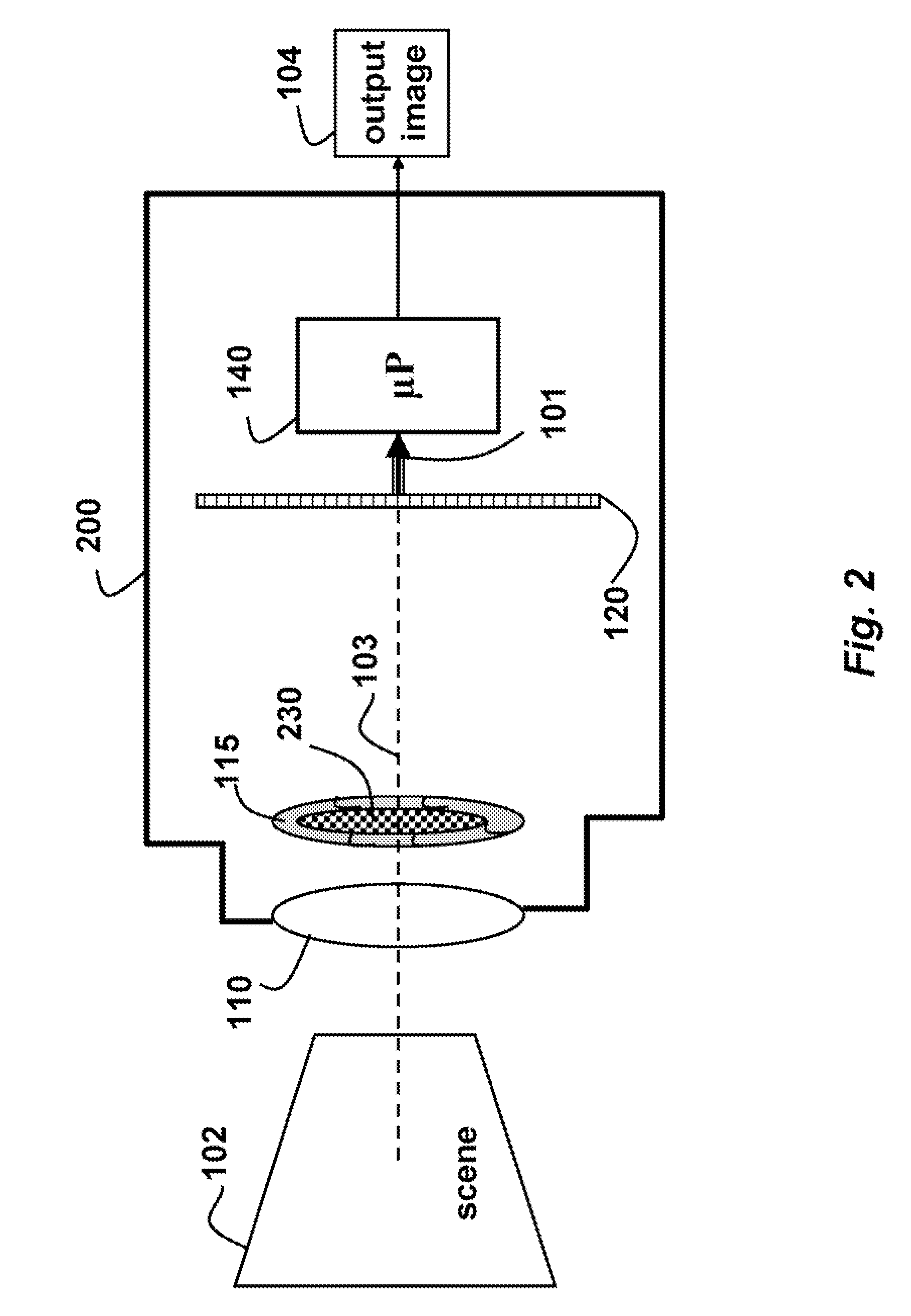4D light field cameras
a light field and camera technology, applied in the field of image processing and computational photography, can solve the problems of inability to reconstruct the entire 4d light field, severely limited the way that conventional images can be changed in a meaningful way, and the practical method of computing such images was not demonstrated. achieve the effect of simple attenuating mask
- Summary
- Abstract
- Description
- Claims
- Application Information
AI Technical Summary
Benefits of technology
Problems solved by technology
Method used
Image
Examples
Embodiment Construction
[0044]Light Field Cameras
[0045]As shown in FIGS. 1 and 2, the embodiments of our invention provide cameras 100 and 200 for acquiring and reconstructing a 4D light field 101 of a scene 102. The camera 100 includes a conventional lens 110, a conventional aperture 115 and a conventional sensor 120. The lens can include multiple elements, as in a compound lens, to correct for aberrations, coma, and distortion. However, it should be understood that there is only one optical path 103. The scanner can be a CCD line-scanner.
[0046]The cameras also include a microprocessor (μP) 140 that can be used to implement the methods described herein. Basically, the microprocessor receives a 2D input image 101, which encodes the 4D light field, and can generate an output image 104, which is a reconstruction of the light field. The output image 104 is a demodulation of the input image.
[0047]Because the input image encodes the light field, the output image can be refocused at a different or greater depth ...
PUM
 Login to View More
Login to View More Abstract
Description
Claims
Application Information
 Login to View More
Login to View More - R&D
- Intellectual Property
- Life Sciences
- Materials
- Tech Scout
- Unparalleled Data Quality
- Higher Quality Content
- 60% Fewer Hallucinations
Browse by: Latest US Patents, China's latest patents, Technical Efficacy Thesaurus, Application Domain, Technology Topic, Popular Technical Reports.
© 2025 PatSnap. All rights reserved.Legal|Privacy policy|Modern Slavery Act Transparency Statement|Sitemap|About US| Contact US: help@patsnap.com



